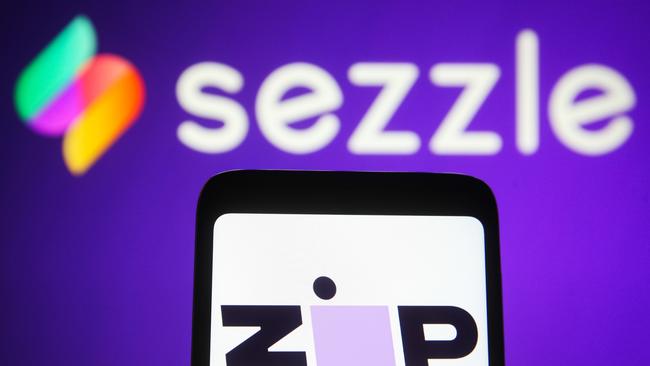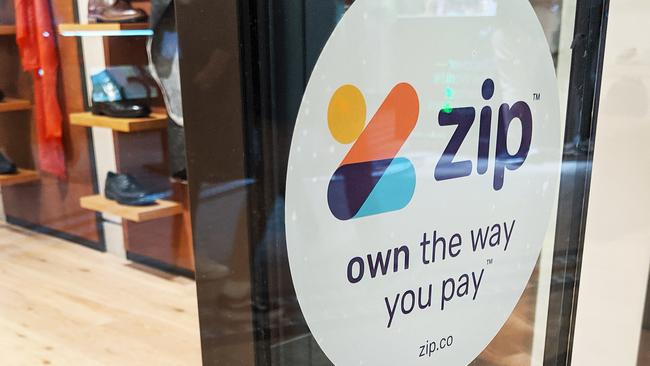Fund managers quit the buy now, pay later stocks as their value and cachet tanks
One time market darling the buy now, pay later sector has nose dived — at least one high-profile stock has a 1c target from an analyst — and fund managers warn against bargain hunting.

For investors who sat on the sidelines in the boom, buy now, pay later stocks might now look attractive: after all, how much worse can it get when a stock has already lost 90 per cent of its value?
Turns out, quite a bit worse, analysts and professional investors warn.
“I think the outlook is pretty grim from an investor’s perspective,” says Dean Fergie, director at small cap investment house Cyan Investment Management.
“There’s been a lot of competition, a lot of spending in terms of trying to acquire customers, and their points of difference are starting to become quite limited now.
“Then you’ve got the macroeconomic issues of potentially weaker consumer spending combined with higher interest rates, which is obviously hurting on the consumer side but also it’s affecting the BNPL operators’ cost of funding. So you can see why the prices of these stocks have been slipping.”
Indeed, for companies like Zip, Sezzle and OpenPay, the share price declines from their highs are already more than 95 per cent. Sezzle’s stock fell 50 per cent this week alone after its planned merger with peer Zip fell apart.

The second deal to go sideways in a matter of weeks – Latitude was due to buy Humm’s consumer finance business before the takeover was scrapped in June – is not a good look for a sector struggling to maintain its credibility and find a path to profit.
A year ago, Sezzle was trading at $9 a share. It’s now at about 20c. However, that’s not low enough for RBC analysts, who this week slapped a 1c-a-share price target on the stock.
Likewise, Zip early last year was trading above $12, compared with its current 53c, though the stock did jump 6 per cent after it called off the merger with US-focused Sezzle.
Even at these rock-bottom prices, many investors are giving BNPL stocks a wide berth.
Bradley King of boutique investment firm Armytage Private says: “We haven’t spent time or money on Zip because there’s so many payment platforms or providers that can do that service. I don’t think they have a unique offering.
“And I’m surprised they’re called technology companies because they really are just financial services providers with slightly better IT capabilities than a bank.”
Fergie has in the past held Afterpay, Sezzle and Splittit but sold out of all three and is not looking to dip his toes back in, at least in the pure play segment.

“I wouldn’t be buying a Zip or a Sezzle,” he says. “I think you’re backed into a corner a bit when you’re still not profitable, your share price has been decimated and you need to raise equity to shore up your balance sheet.
“Afterpay/Block is probably the one you’d look at because it is much better funded, it’s got a more diversified business model and there’s still quite a bit of value in its equity.”
The one-time darling of the sector, Afterpay, was delisted from the ASX early this year after being taken over by US-based Block in a multibillion-dollar deal. Before the takeover, it had a dream run, shooting from $8 following the 2020 Covid correction to $160 a little over a year later.
While most analysts were quick to buy into the hype, ascribing ever higher price targets to the stock on its way up, UBS analyst Tom Beadle sat as a lone outlier, setting a price target of $30 early last year, when the stock was trading at $135.

“It was just a typical bubble, if there is such a thing,” Beadle says. “There was a lot of hype, a lot of emotion, and probably a fair bit of greed. And quite honestly, just a lack of rational, unemotional decision making among certain sets of investors.
“To me, there was a very vocal minority promoting that stock, and … there was probably a bit of a selection bias when it came to sell-side coverage.”
Beadle’s price targets on Afterpay and Zip took into account the capital required by these companies to fund their growth. He suggests other analysts didn’t factor that aspect into their valuations at all: “I’m still astounded it was ignored.”
While he stopped covering Afterpay following its takeover, he retains a sell on Zip and argues that the company has lost a lot of credibility. “There’s just too much uncertainty (around Zip),” he says. “It’s really hard to say where the bottom is.
“But where I would be more comfortable is if Zip starts to provide more transparency around their profitability and how they’re going to achieve it.”
Of the rest of the BNPL stocks – there are about a dozen on the ASX – not all will be able to reach the scale to be sustainable, he warns.
“One of the biggest issues for the sector is going to be their ability to manage credit risks




To join the conversation, please log in. Don't have an account? Register
Join the conversation, you are commenting as Logout